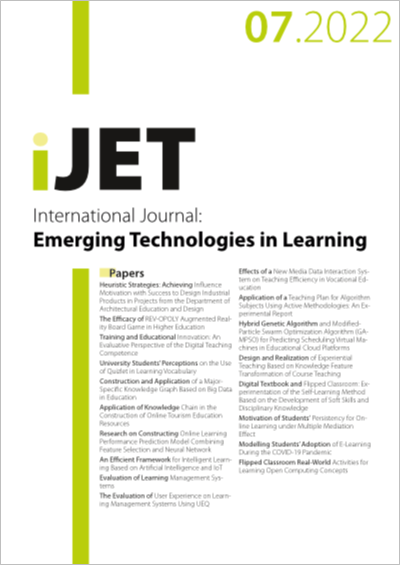The Evaluation of User Experience on Learning Management Systems Using UEQ
DOI:
https://doi.org/10.3991/ijet.v17i07.29525Keywords:
LMS, UX, usability evaluation, LMS evaluationAbstract
The rapid development and improvement of learning management system (LMS) is driven by the rise of ubiquitous computing. As LMS design shifts from technology-centric to user-centric, developers need to prioritize user experience (UX) to improve their LMS. LMS as part of an e-learning system can benefit from UX research to measure ease of use and user satisfaction. Many academic institutions around the world prefer to use their own customized LMS, such as: B. Moodle is an open source LMS platform built and maintained by most Jordanian universities. Therefore, UX evaluation and measurement is very important for LMS. Several studies have been conducted to analyze and measure LMS products for user feedback. On the other hand, these studies only partially consider LMS products. Instead of observing the quality of LMS, they conducted a study focused on comparing LMS and gaining awareness. The purpose of this study is to collect comments and feedback and evaluate the UX when dealing with LMS. Using Moodle as a case study, this study evaluates the user experience of LMS. Data were collected from 867 participants from various Jordanian institutions using LMS. An online survey was prepared and distributed through various social media groups. This study proposes to use the UX Survey Tool (UEQ) to evaluate and quantify the user experience of LMS. This study aims to get feedback and evaluate and identify the UX while interacting with the LMS. In general, implementing a user experience questionnaire to evaluate and evaluate an LMS provides not only complete user awareness, but also the relative quality level of the LMS. The results provide feedback and support assistance in the implementation of the LMS.
Downloads
Published
How to Cite
Issue
Section
License
Copyright (c) 2022 Ashraf Saleh

This work is licensed under a Creative Commons Attribution 4.0 International License.



